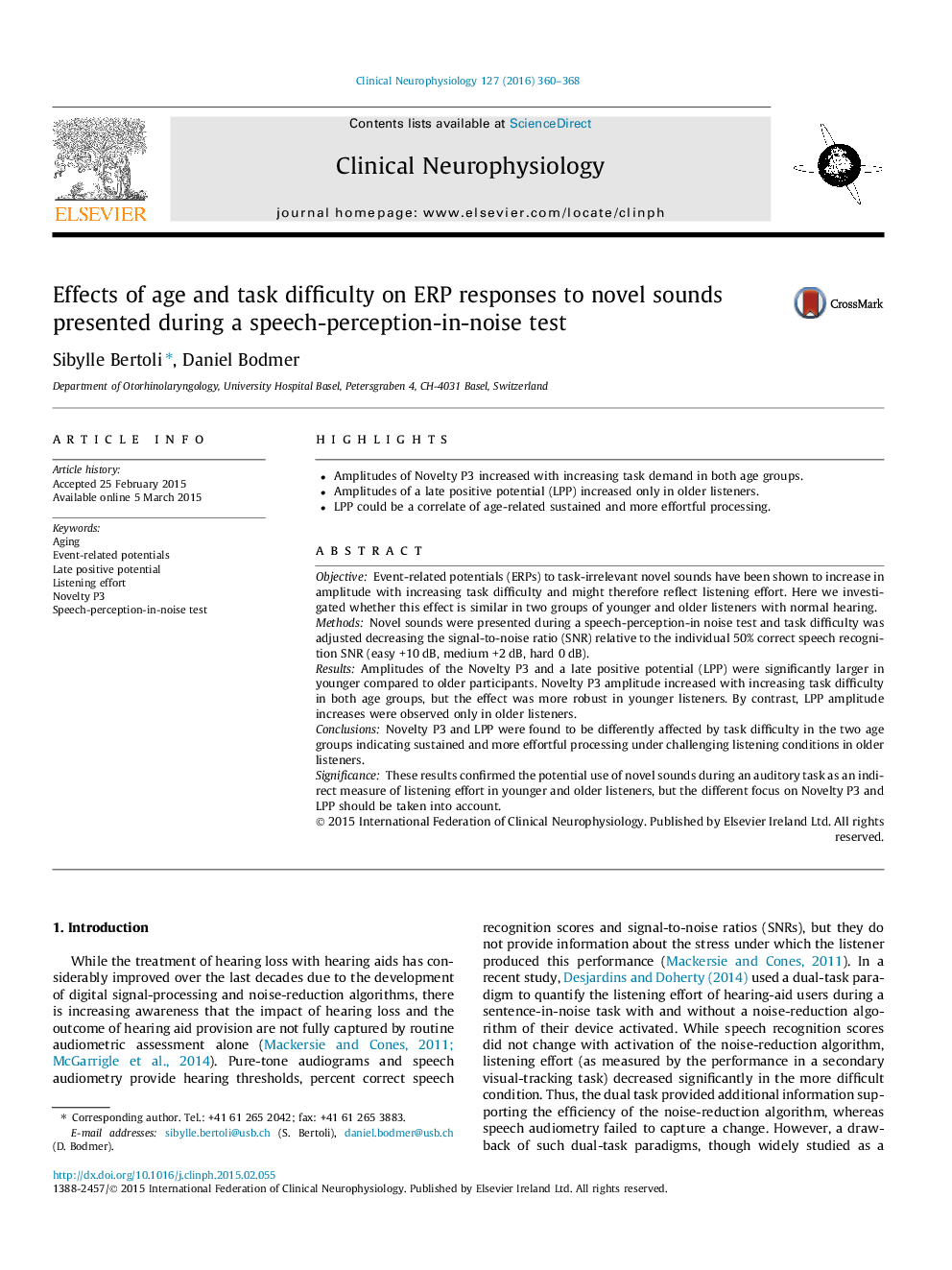| Article ID | Journal | Published Year | Pages | File Type |
|---|---|---|---|---|
| 6007887 | Clinical Neurophysiology | 2016 | 9 Pages |
â¢Amplitudes of Novelty P3 increased with increasing task demand in both age groups.â¢Amplitudes of a late positive potential (LPP) increased only in older listeners.â¢LPP could be a correlate of age-related sustained and more effortful processing.
ObjectiveEvent-related potentials (ERPs) to task-irrelevant novel sounds have been shown to increase in amplitude with increasing task difficulty and might therefore reflect listening effort. Here we investigated whether this effect is similar in two groups of younger and older listeners with normal hearing.MethodsNovel sounds were presented during a speech-perception-in noise test and task difficulty was adjusted decreasing the signal-to-noise ratio (SNR) relative to the individual 50% correct speech recognition SNR (easy +10Â dB, medium +2Â dB, hard 0Â dB).ResultsAmplitudes of the Novelty P3 and a late positive potential (LPP) were significantly larger in younger compared to older participants. Novelty P3 amplitude increased with increasing task difficulty in both age groups, but the effect was more robust in younger listeners. By contrast, LPP amplitude increases were observed only in older listeners.ConclusionsNovelty P3 and LPP were found to be differently affected by task difficulty in the two age groups indicating sustained and more effortful processing under challenging listening conditions in older listeners.SignificanceThese results confirmed the potential use of novel sounds during an auditory task as an indirect measure of listening effort in younger and older listeners, but the different focus on Novelty P3 and LPP should be taken into account.
